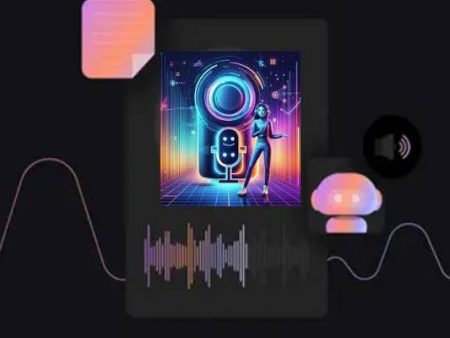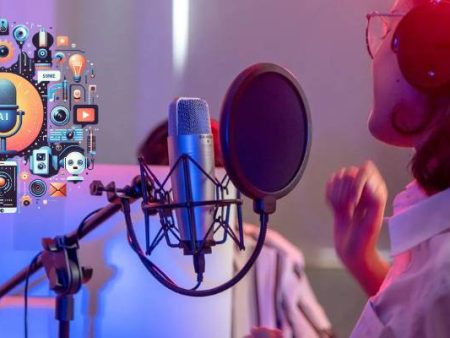Hearing someone speak has always carried a kind of built-in credibility. If you heard it with your own ears, then it must be true, right? That assumption is under assault.
Artificial intelligence has given us the power to generate synthetic voices so convincing that even family members have mistaken them for the real thing.
On the bright side, AI-generated voices open new doors: accessibility for the speech-impaired, affordable audiobook production, customer service automation.
But in the shadows, the same technology is fueling scams, sowing political chaos, and making us question whether any voices truly belong to the people we think we’re hearing.
This article unpacks the dark side of AI voices, focusing on deepfake threats, misinformation campaigns, and the ethical knots we’re now forced to untangle. Along the way, I’ll bring in hard numbers, case studies, and yes, some personal opinions that lean toward caution.
The Rise of Synthetic Voices
From Utility to Weapon
Text-to-speech tools started innocently enough—reading books for the blind, navigating drivers through busy streets. But as neural networks advanced, especially with innovations like Google’s WaveNet, AI voices stopped sounding robotic. They became emotional, fluid, and human-like.
The global AI voice generator market was valued at USD 3.5 billion in 2023, and it’s projected to grow at nearly 27% CAGR through 2030.
That growth reflects demand not only in entertainment and education but also in marketing manipulation, where companies harness familiar voices to build trust and persuade.
Unfortunately, the same features that make AI voices powerful for commerce make them equally powerful for deception.
Deepfake Voices in Action
Real-world Scams
One of the earliest widely reported cases came in 2019, when criminals cloned the voice of a German energy executive to trick a UK subsidiary into wiring $243,000 to a fraudulent account. The attackers mimicked the CEO’s slight German accent, fooling the victim into believing it was a legitimate call.
Since then, cases have multiplied. In 2023, Arizona police reported incidents where scammers cloned children’s voices to call parents, crying for help and demanding ransom. Imagine the trauma of receiving that call—voice using the deepest parental fears to extort money.
Political Manipulation
Politics is perhaps the most alarming frontier. Ahead of elections in Slovakia, an audio deepfake of a political candidate surfaced, faking his support for rigging ballots. Experts warned it could influence voters in close races.
In the United States, the Federal Communications Commission recently ruled that AI-generated voices in robocalls are illegal, after a fake Biden robocall urged voters to skip a primary election.
These examples illustrate the dark side: technology that was pitched as giving experience more personalization is now destabilizing democratic trust.
The Anatomy of a Voice Deepfake
So how do these fakes actually work?
- Data collection: Just 30 seconds of clear audio is enough for many models. Social media clips, podcasts, or press conferences all provide ample material.
- Model training: Deep neural networks map patterns in pitch, rhythm, and accent, creating a digital replica.
- Synthesis: Text input is converted into speech that mimics the target voice.
- Deployment: Scammers send fake calls, create misleading ads, or spread misinformation on social media.
The barrier to entry is low. Tools once confined to research labs are now subscription-based services costing less than $30 a month. That accessibility expands both legitimate creativity and malicious abuse.
Voices Truly Ours? The Ownership Dilemma
Do you own your voice? Legally, the answer is complicated. In the U.S., the “right of publicity” protects against unauthorized commercial use of someone’s likeness, including voice. But laws vary by state, and enforcement across borders is nearly impossible.
Celebrities face particular vulnerability. Imagine hearing Morgan Freeman’s voice promoting a product he never touched. Unauthorized clones already circulate online, voice using famous actors for entertainment skits, advertisements, and political memes.
The ethical issue here isn’t just about copyright. It’s about identity. Voices carry intimacy and authenticity. When they’re cloned without consent, it feels like a violation of selfhood.
The Psychological Impact
Hearing is believing. Our brains are wired to trust spoken language differently from text. That’s why audio misinformation can cut deeper than a fake article.
When you hear a loved one’s cloned voice crying for help, or a leader’s fake speech, it bypasses rational skepticism. The emotional response comes first; fact-checking comes later, if at all.
As a listener, I find myself more rattled by audio deepfakes than visual ones. Images can be analyzed, dissected, and questioned. Voices slip past those defenses, hitting an emotional core. That’s why the dark deepfake risk feels especially dangerous.
Marketing Manipulation: The Commercial Twist
Even outside of scams, the ethical gray zone is wide.
Brands experiment with AI-generated celebrity voices to reach audiences more effectively. Imagine hearing your favorite singer narrate an ad, personalized to your name and preferences. That’s the marketing manipulation future companies dream of.
Research shows people are more likely to buy when the pitch comes from a familiar or trusted voice (Stanford University study). But if those voices weren’t licensed, we’re essentially talking about manipulation disguised as personalization.
There’s a thin line between giving experience more personalization and exploiting trust.
Sound Down Tech Behind the Curtain
Behind the shiny demos lies uncomfortable reality. Many AI systems are trained on scraped datasets of human recordings. Podcasts, YouTube videos, and yes, audiobooks—often ingested without permission.
So while companies showcase dazzling AI voices, the sound down tech behind them may rest on unpaid labor and stolen data. This undermines not only professional narrators but also the ethical standing of the entire industry.
Detection and Defense
What can be done? Detection is one piece of the puzzle. Researchers are developing systems to flag synthetic voices by analyzing audio artifacts, but adversaries constantly find workarounds.
Watermarking—embedding inaudible signals in generated audio—is another strategy. But widespread adoption requires cooperation across tech companies, regulators, and platforms.
Meanwhile, public awareness campaigns teach people to question audio the same way they now question photos. Still, when an urgent phone call or convincing speech lands in your ear, skepticism doesn’t always kick in soon enough.
Legal and Policy Responses
- The FCC ban on AI voices in robocalls sets a precedent in the U.S. (FCC press release).
- The EU AI Act designates voice cloning as “high-risk,” requiring disclosure and safeguards.
- Some U.S. states are expanding “deepfake” laws to include synthetic voices used in elections or pornography.
But regulation is slow, and technology moves fast. Until international agreements emerge, enforcement will remain uneven.
My Take: Fear and Hope Intertwined
Personally, I find myself torn. Part of me marvels at the creativity of AI voices. The potential for accessibility, language translation, and cost reduction is enormous.
But another part of me fears the erosion of trust. If we can no longer believe what we hear, we enter a destabilized world where truth itself feels slippery. And unlike photos or text, which we’ve learned to scrutinize, voices still feel like intimate proof.
As a writer and listener, I value authenticity. It’s not just about information—it’s about connection. Losing that feels like losing a piece of our humanity.
Paths Forward: Balancing Innovation and Responsibility
- Consent-first culture: Voices should not be cloned without explicit permission.
- Transparency: Label AI-generated audio clearly, so listeners know what they’re hearing.
- Shared standards: Develop global frameworks for watermarking and disclosure.
- Education: Teach media literacy for audio the way we teach it for visuals.
- Collaboration: Encourage partnerships between tech companies, policymakers, and artists.
Conclusion: Guarding What We Hear
Synthetic voices are here to stay. They offer incredible opportunities, but their misuse threatens trust, democracy, and personal identity.
We must acknowledge the voices truly at risk—those of loved ones, leaders, and artists—and build systems that protect them from exploitation. The line between personalization and marketing manipulation, between creativity and fraud, is razor thin.
As we explore this future, let’s remember that voice using technology is not inherently good or bad. It reflects our choices. If we commit to transparency, consent, and accountability, AI can be about giving experience more—not less—of what makes human communication meaningful.
The question isn’t whether AI voices will shape our world; it’s whether we’ll guide them responsibly or let them guide us into chaos.


